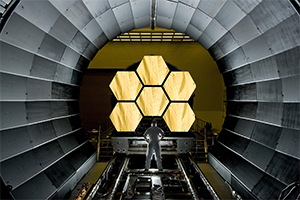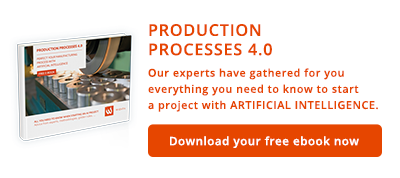How predictive and prescriptive analytics accelerate innovation
Artificial intelligence (AI) is disrupting all industries. The manufacturing sector in particular, since most factories are already equipped with many sensors that collect crucial information for day-to-day operations. This data already helps you to optimize your production, but with predictive and prescriptive analytics you can measure the impact of innovation in advance, ensure the highest level of quality and make better informed decisions.
Implementing an industrial process has a high cost, and its return on investment is linked to the production in large quantities. That’s why it’s not recommended to eliminate an operational process or to interrupt the current production to try a new method. How to innovate in these conditions? How to test what advantages these new technologies bring without committing production lines and R&D budget towards an uncertain result?
Innovate without risks
The answer to these questions is predictive and prescriptive analytics through an AI that has a complete view on the production processes. When imagined from its inception to reproduce the mechanisms of production, a virtual model is no longer disconnected from the physical world. It reacts like the real system it copies, allowing to quickly test new configurations at minimal cost, without financial risks and without touching the hardware.
Extract actionable insights from your data
Starting with an exploratory workshop, it is possible to detect early if the sensor data originally harvested is adequate and sufficient in volume to solve the business challenges. Historical data are then processed to construct a model, which is evaluated and validated with the subsequent data. Using new technologies such as AI, the model can then predict the future production gains per the chosen parameters, and prescribe the best actions to achieve an optimal result.
Make better informed decisions
Before engaging in profound, expensive and risky changes, the industrialist can then compare the AI-assisted pilot production with an unchanged production line. Once the concrete results have been validated, the new technologies can be deployed in other production lines and then in other plants. "We are making our experiments in a digital laboratory stored in the cloud", recently explained Jean-Philippe Hugo, CEO of Wizata, in the Silicon Luxembourg magazine. "When the client is ready we can move from research to production with the flick of a switch."
Be ready to tackle future manufacturing challenges
Industrial companies must embrace digital transformation and turn insights from their data into foresight with predictive and prescriptive analytics. The manufacturing sector has an advantage over many other industries, because sensors already record thousands of data variables on machine components. All that remains is to convert this bulk of information into a competitive advantage.
How can we help you?
Let’s talk about how predictive and prescriptive analytics can improve your processes. You want to test how AI could work for you? Have a look at our exploratory workshop, we explain the basics and how we can help you during your first steps. Our experts have also gathered the most useful advice for carrying out an AI project. Contact us via info@wizata.com.



